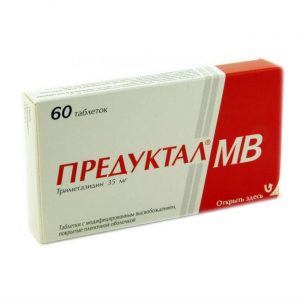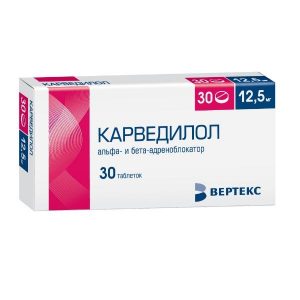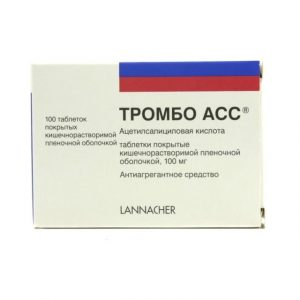Description
Release form
Solution for SC administration.
Packing
10 pcs.
Pharmacological action of
Fraxiparin – low molecular weight heparin (LMWH), obtained by depolymerization from standard heparin is a glycosaminoglycan with an average molecular weight of 4300 daltons.
It exhibits high ability to bind to a plasma protein with antithrombin III (AT III). This binding leads to accelerated inhibition of factor Xa, which is due to the high antithrombotic potential of nadroparin. Other mechanisms that provide the antithrombotic effect of nadroparin include activation of a tissue factor conversion inhibitor (TFPI), activation of fibrinolysis by direct release of a tissue plasminogen activator from endothelial cells, and modification of blood rheological properties (lowering blood viscosity and increasing permeability of platelet and granulocyte membranes).
Nadroparin calcium has a higher anti-Xa factor activity than anti-IIa factor or antithrombotic activity and has both immediate and prolonged antithrombotic activity. Compared to unfractionated heparin, nadroparin has a lesser effect on platelet function and aggregation, and a less pronounced effect on primary hemostasis.
At prophylactic doses, nadroparin does not cause a marked decrease in APTT. With the course of treatment during the period of maximum activity, an increase in APTT to a value 1.4 times higher than the standard is possible. Such prolongation reflects the residual antithrombotic effect of calcium nadroparin.
Indications
– Prevention of thromboembolic complications in surgical and orthopedic interventions in patients with a high risk of thrombosis (in acute respiratory and / or heart failure under conditions of ICU, unstable angina pectoris, myocardial infarction without pathological Q wave on an ECG).
– Treatment of thromboembolism.
– Prevention of blood coagulation during hemodialysis.
Contraindications
– Thrombocytopenia with a history of nadroparin.
– Signs of bleeding or an increased risk of bleeding associated with impaired hemostasis (with the exception of DIC, not caused by heparin).
– Organic bleeding disorder (e.g., acute gastric or duodenal ulcer).
– Injuries or surgical interventions on the brain, spinal cord, or eyes.
– Intracranial hemorrhage.
– Acute septic endocarditis.
– Severe renal failure (CC less than 30 ml / min) in patients receiving Fraxiparin for the treatment of thromboembolism, unstable angina and myocardial infarction without Q wave.
– Children and adolescents (under 18 years).
– Hypersensitivity to nadroparin or any other components of the drug.
With caution, Fraxiparin should be prescribed in situations associated with an increased risk of bleeding: with liver failure, with renal failure, with severe arterial hypertension, with a history of peptic ulcers or other diseases with an increased risk of bleeding, with circulatory disorders in the vascular membrane and retina eyes, in the postoperative period after operations on the brain and spinal cord or in the eyes, in patients weighing less than 40 kg, with a duration of therapy exceeding the rivers recommended (10 days), in case of non-compliance with the recommended treatment conditions (especially increase in duration and dose for course use), when combined with drugs that increase the risk of bleeding.
Use during pregnancy and lactation
Currently, there is only limited data on the penetration of nadroparin through the placental barrier in humans.
Therefore, the use of Fraxiparin during pregnancy is not recommended, unless the potential benefit to the mother outweighs the risk to the fetus.
Currently, there is only limited data on the allocation of nadroparin with breast milk.
In this regard, the use of nadroparin during lactation (breastfeeding) is not recommended.
In experimental animal studies, no teratogenic effect of calcium nadroparin was found.
Special instructions
Particular attention should be paid to specific instructions for use for each drug belonging to the class of low molecular weight heparins, as they can be used in various dosage units (units or mg). Because of this, the alternation of Fraxiparin with other LMWH is unacceptable with prolonged treatment. It is also necessary to pay attention to which drug is used – Fraxiparin or Fraxiparin Forte, because this affects the dosage regimen. Graduated syringes are designed to select the dose depending on the patient ² ¢s body weight.
Fraxiparin is not intended for intramuscular administration. Since thrombocytopenia (heparin-induced thrombocytopenia) is possible when using heparins, it is necessary to monitor platelet counts throughout the course of treatment with Fraxiparin. Rare cases of thrombocytopenia have been reported, sometimes more severely.loya, which could be associated with arterial or venous thrombosis, which is important to consider in the following cases: with thrombocytopenia with a significant decrease in platelet count (by 30-50% compared to normal values) with negative dynamics from thrombosis, for which the patient receives treatment for DIC. In these cases, treatment with Fraxiparin should be discontinued. Thrombocytopenia is immuno-allergic in nature and is usually observed between the 5th and 21st days of therapy, but may occur earlier if the patient has a history of heparin-induced thrombocytopenia.
In the presence of a history of heparin-induced thrombocytopenia (with conventional or low molecular weight heparins), Fraxiparin may be prescribed if necessary. However, in this situation strict clinical monitoring is indicated and, at least a daily platelet count. If thrombocytopenia occurs, the use of Fraxiparin should be discontinued immediately. If thrombocytopenia occurs against the background of heparins (normal or low molecular weight), then the possibility of prescribing anticoagulants of other groups should be considered. If other drugs are not available, it is possible to use another low molecular weight heparin. In this case, you should daily monitor the number of platelets in the blood. If signs of initial thrombocytopenia continue to be observed after drug replacement, treatment should be discontinued as soon as possible.
It must be remembered that platelet aggregation control based on in vitro tests is of limited value in the diagnosis of heparin-induced thrombocytopenia. In elderly patients, before starting therapy with Fraxiparin, it is necessary to evaluate renal function. Heparins can suppress the secretion of aldosterone, which can lead to hyperkalemia, especially in patients with high levels of potassium in the blood or in patients at risk of developing hyperkalemia (with diabetes mellitus, chronic renal failure, metabolic acidosis or with the simultaneous use of drugs that can cause hyperkalemia during prolonged therapy). In patients with an increased risk of developing hyperkalemia, potassium levels in the blood should be monitored.
The risk of spinal / epidural hematomas increases in individuals with established epidural catheters or with the concomitant use of other drugs that affect hemostasis (NSAIDs, antiplatelet agents, other anticoagulants). Risk, probably also increases with traumatic or repeated epidural or spinal punctures. The question of the combined use of neuroaxial blockade and anticoagulants should be decided individually, after evaluating the effectiveness / risk ratio. In patients who are already receiving anticoagulants, the need for spinal or epidural anesthesia should be justified. In patients for whom elective surgery is planned using spinal or epidural anesthesia, the need for the introduction of anticoagulants should be justified. If the patient is given a lumbar puncture or spinal or epidural anesthesia, a sufficient time interval should be observed between the administration of Fraxiparin and the administration or removal of the spinal / epidural catheter or needle. Careful monitoring of the patient is necessary in order to identify signs and symptoms of neurological disorders. If violations in the neurological status of the patient are detected, urgent appropriate therapy is required.
In the prophylaxis or treatment of venous thromboembolism, as well as in the prevention of blood coagulation in the extracorporeal circulation system during hemodialysis, co-administration of Fraxiparin with such drugs as acetylsalicylic acid, other salicylates, NSAIDs and antiplatelet agents is not recommended. this may increase the risk of bleeding.
Fraxiparin should be used with caution in patients receiving oral anticoagulants, corticosteroids for systemic use, and dextran. When prescribing oral anticoagulants to patients receiving Fraxiparin, its use should be continued until the prothrombin time indicator stabilizes to the desired value.
Composition
1 syringe contains calcium nadroparin 5700 IU anti-Xa.
Dosage and administration of
In case of SC administration, it is preferable to administer the drug in the patient s supine position, SC tissue of the anterolateral or posterolateral surface of the abdomen, alternately on the right and left sides. Allowed to enter the thigh. In order to avoid drug loss when using syringes, do not remove air bubbles before injection.
The needle should be inserted perpendicularly, and not at an angle, into the pinched fold of skin formed between the thumb and forefinger. The fold should be maintained during the entire period of administration of the drug. Do not rub the injection site after injection.
For the prevention of thromboembolism in general surgical practice, the recommended dose of Fraxiparin is 0.3 ml (2850 anti-Xa ME) s / c. The drug is administered 2-4 hours before surgery, then – 1 time / day. Treatment is continued for at least 7 days or during the entire period of increased risk of thrombosis, until the patient is transferred to an outpatient setting.
For the prevention of thromboembolism during orthopedic operations, Fraxiparin is administered subcutaneously in a dose set depending on the patient’s body weight at the rate of 38 anti-XA IU / kg, which can be increased to 50% on the 4th postoperative day. The initial dose is prescribed 12 hours before the operation, the 2nd dose – 12 hours after the end of the operation. Further, Fraxiparin continues to be used 1 time / day for the entire period of increased risk of thrombus formation until the patient is transferred to an outpatient regimen. The minimum duration of therapy is 10 days.
Patients at high risk of thrombosis (with unstable angina, Myocardial infarction without tooth Q) Fraxiparin is prescribed subcutaneous 2 times / day (every 12 hours). The duration of treatment is usually 6 days. In clinical studies, patients with unstable angina pectoris / myocardial infarction without Q wave Fraxiparin was prescribed in combination with acetylsalicylic acid at a dose of 325 mg / day. The initial dose is administered as a single intravenous bolus injection, the subsequent doses are administered sc. The dose is set depending on body weight at the rate of 86 anti-XA IU / kg.
In the treatment of thromboembolism, oral anticoagulants (in the absence of contraindications) should be prescribed as soon as possible. Therapy with Fraxiparin is not stopped until the target values of the prothrombin time indicator are reached. The drug is prescribed s / c 2 times / day (every 12 hours), the usual duration of the course is 10 days. The dose depends on the patient’s body weight at the rate of 86 anti-XA ME / kg body weight.
Prevention of blood coagulation in the extracorporeal circulation system during hemodialysis: the dose of Fraxiparin should be set individually for each patient, taking into account the technical conditions of dialysis. Fraxiparin is injected once into the arterial line of the dialysis loop at the beginning of each session. For patients without an increased risk of bleeding, the recommended initial doses are set depending on body weight, but sufficient for a 4-hour dialysis session.
In patients with an increased risk of bleeding, half the recommended dose of the drug can be used. If the dialysis session lasts longer than 4 hours, additional small doses of Fraxiparin may be administered. In subsequent dialysis sessions, the dose should be selected depending on the observed effects. The patient should be monitored during the dialysis procedure due to the possible occurrence of bleeding or signs of thrombosis in the dialysis system.
In elderly patients, dose adjustment is not required (except in patients with impaired renal function). Before starting treatment with Fraxiparin, it is recommended to monitor renal function indicators.
In patients with mild to moderate renal failure (creatinine clearance? 30 ml / min and less than 60 ml / min): dose reduction is not required for the prevention of thrombosis, in patients with severe renal failure (creatinine clearance less than 30 ml / min) the dose should be reduced by 25%.
In patients with mild to moderate renal failure: for the treatment of thromboembolism or for the prevention of thromboembolism in patients with a high risk of thrombosis (with unstable angina and myocardial infarction without Q wave), the dose should be reduced by 25%, the drug is contraindicated in patients with severe renal failure.
Side effects
The most common side effect is the formation of a subcutaneous hematoma at the injection site. In some cases, there is the appearance of dense nodules that do not mean heparin encapsulation, which disappear after a few days.
Large doses of Fraxiparin can cause bleeding in various locations and mild thrombocytopenia (type I), which usually disappears during further therapy. Perhaps a temporary moderate increase in the level of liver enzymes (ALT, AST).
Skin necrosis and allergic reactions are rare. Several cases of anaphylactic reactions and immune thrombocytopenia (type II), combined with arterial and / or venous thrombosis or thromboembolism, have been reported.
Drug interactions
Increased risk of developing hyperkalemia with the use of fraxiparin: the risk of developing hyperkalemia increases with the use of fraxiparin in patients receiving potassium salts, potassium-sparing diuretics, ACE inhibitors, angiotensin II receptor antagonists, NSAIDs, heparins (low molecular weight or unfractionated), cyclosporine and tacrolimus, trimethoprim.
Potentiation of the action when using fraxiparin: Fraxiparin can potentiate the effect of drugs that affect hemostasis, such as acetylsalicylic acid and other NSAIDs, vitamin K antagonists, fibrinolytics and dextran, platelet aggregation inhibitors (except for acetylsalicylic acid and an analgesic drug. E. at a dose of more than 500 mg NSAIDs): abciximab, acetylsalicylic acid as an antiplatelet agent (i.e. at a dose of 50-300 mg) for cardiological and neurological indications, ber simple, clopidogrel, eptifibatide, iloprost, ticlopidine, tirofiban increase the risk of bleeding.
overdose Symptoms: The main symptom of an overdose is bleeding, you need to monitor your platelet count and other blood coagulation parameters.
Treatment: minor bleeding does not require special therapy (it is usually sufficient to reduce the dose or delay the subsequent administration). Protamine sulfate has a pronounced neutralizing effect against the anticoagulant effects of heparin, however, in some cases, anti-Xa activity may be partially restored.
The use of protamine sulfate is only necessary in severe cases. It should be borne in mind that 0.6 ml of protamine sulfate neutralizes about 950 anti-HA ME nadroparin. The dose of sulphate protamine is calculated taking into account the time elapsed after heparin administration, with a possible reduction in the antidote dose.
Storage conditions
The product should be stored out of the reach of children, away from heaters at temperatures not exceeding 30 ° C.
should not be frozen.
active substance
Nadroparin Calcium
Terms leave through pharmacies
In retseptu
Dosage form
solution for injection
Prescription
Adults as prescribed by the doctor, Pregnant as prescribed by the doctor
Indications
Indications
Prevention of acute myocardial infarction, Prevention of thrombosis, From angina pectoris, Profile tic thromboembolism, stroke prevention
Aspen Pharma Trading Limited, Ireland




